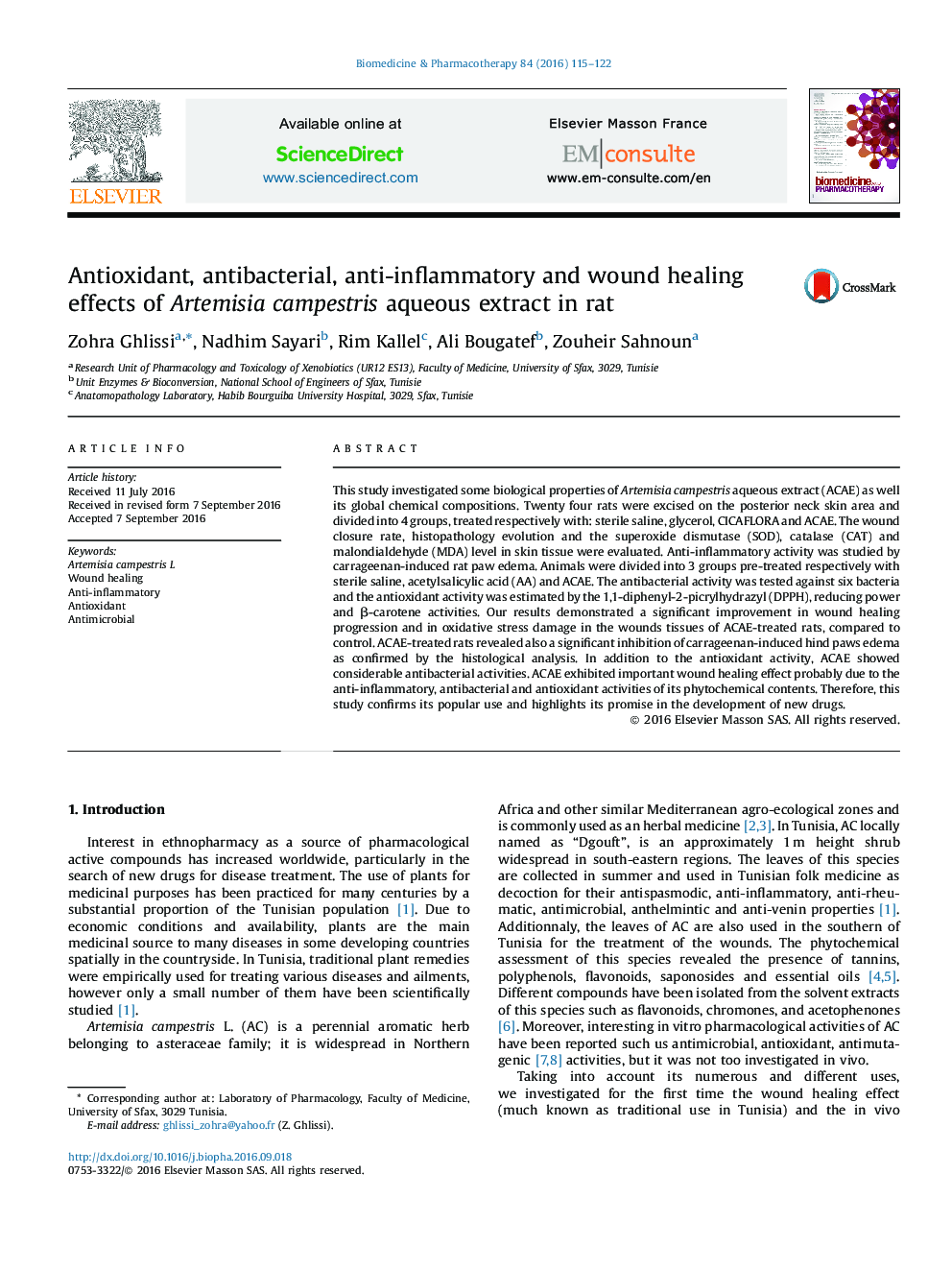| Article ID | Journal | Published Year | Pages | File Type |
|---|---|---|---|---|
| 5553346 | Biomedicine & Pharmacotherapy | 2016 | 8 Pages |
This study investigated some biological properties of Artemisia campestris aqueous extract (ACAE) as well its global chemical compositions. Twenty four rats were excised on the posterior neck skin area and divided into 4 groups, treated respectively with: sterile saline, glycerol, CICAFLORA and ACAE. The wound closure rate, histopathology evolution and the superoxide dismutase (SOD), catalase (CAT) and malondialdehyde (MDA) level in skin tissue were evaluated. Anti-inflammatory activity was studied by carrageenan-induced rat paw edema. Animals were divided into 3 groups pre-treated respectively with sterile saline, acetylsalicylic acid (AA) and ACAE. The antibacterial activity was tested against six bacteria and the antioxidant activity was estimated by the 1,1-diphenyl-2-picrylhydrazyl (DPPH), reducing power and β-carotene activities. Our results demonstrated a significant improvement in wound healing progression and in oxidative stress damage in the wounds tissues of ACAE-treated rats, compared to control. ACAE-treated rats revealed also a significant inhibition of carrageenan-induced hind paws edema as confirmed by the histological analysis. In addition to the antioxidant activity, ACAE showed considerable antibacterial activities. ACAE exhibited important wound healing effect probably due to the anti-inflammatory, antibacterial and antioxidant activities of its phytochemical contents. Therefore, this study confirms its popular use and highlights its promise in the development of new drugs.
